#National Museum in Warsaw
Text

Angel, Tadeusz Popiel (1863-1913)
#art#art history#Tadeusz Popiel#religious art#Christian art#Christianity#angel#angels#Polish art#19th century art#oil on canvas#National Museum in Warsaw
1K notes
·
View notes
Text
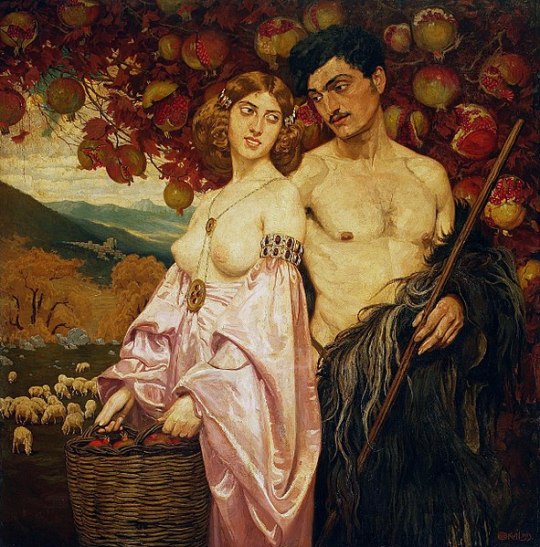
Edward Okuń (Polish, 1872-1945)
Self-portrait with a Sicilian woman – Pomegranates, 1913. National Museum in Warsaw
oil on canvas
#edward okun#Edward Okuń#polish#20th century#art nouveau#painting#self portrait#oil on canvas#national museum in warsaw
63 notes
·
View notes
Photo
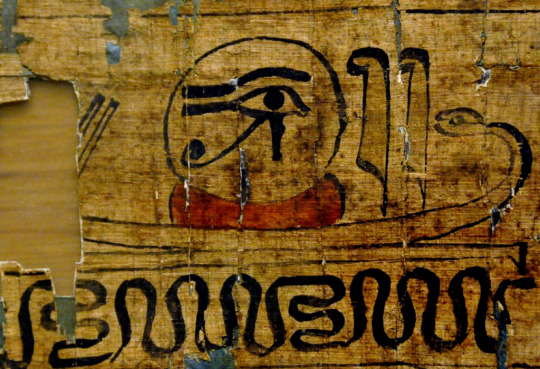
2009_0812_135914AA Budapest (by Hans Ollermann)
An anonymous Amduat papyrus, dating to the 21st Dynasty. At the Museum of Fine Arts in Budapest.
[An Egyptian papyrus, brown, with a black and red illustration of the solar barque. The prow is a snake looking back at the sun in the barque. The sun sits on a red base, and contains an eye of Horus. Two Maat feathers stand in front of it. The barque sits on the hieroglyph for "sky", beneath which Apophis is drawn with a thick black coiling line.]
#Ancient Egypt#papyrus#Third Intermediate Period#21st Dynasty#barque#Apophis#wedjat#eye#funerary papyrus#National Museum in Warsaw#Amduat#Book of the Dead
12 notes
·
View notes
Text

Do 1 września 1939 najcenniejsze dzieła Muzeum Narodowego w Warszawie zostały ukryte. Pracownicy muzeum prowadzili dokładny spis dzieł. W 1943 roku w związku ze zbliżającym się frontem wschodnim częśc dzieł zdeponowanych wcześniej na Wawelu zostało wywiozionych w głąb Rzeszy. W 1944 po wybuchu Powstania Warszawskiego, gmach Muzeum został przejęty przez niemieckie oddziały SS - muzeum poniosło największe straty.
Straty wojenne Muzeum Narodowego w Warszawie szacuje się na około 12 tysięcy obiektów, czyli 10% przedwojennych zbiorów.
W ostatnich latach do zbiorów powróciło ponad 500 dzieł, jednak ogromna liczba obiektów wciąż czeka na odzyskanie.
———————————————————————
Prior to September 1, 1939, the National Museum in Warsaw kept its most valuable works hidden, with the museum staff keeping detailed inventories. As the eastern front approached in 1943, some of the works that had been previously deposited at Wawel were transported deeper into the Reich. When the Warsaw Uprising broke out in 1944, German SS troops took over the museum building, resulting in the greatest losses suffered by the museum.
It is estimated that the National Museum in Warsaw lost around 12,000 objects during the war, which equates to 10% of its pre-war collection.
Although the collection has seen the return of over 500 works in recent years, a significant number of objects still await recovery.
#national museum in warsaw#muzeum narodowe Warszawa#warsaw#second world war#art#dzieło odzyskane#polish history
11 notes
·
View notes
Text
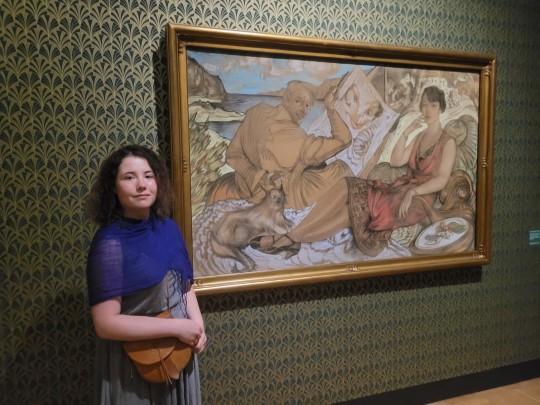
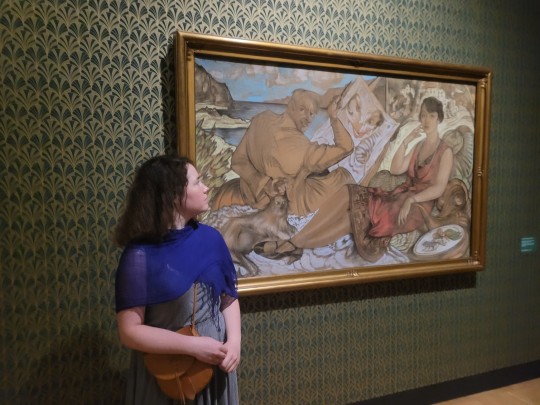
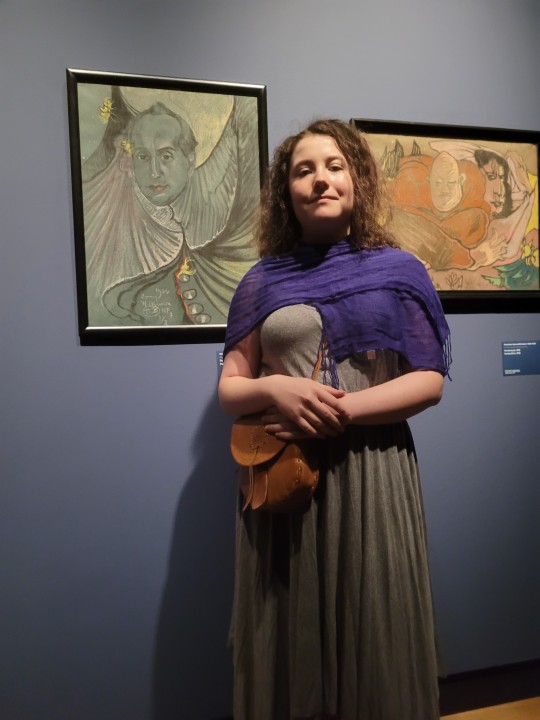
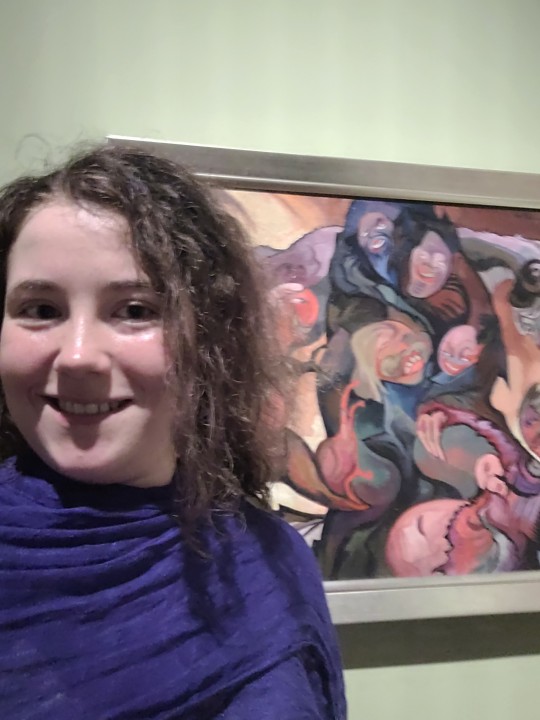
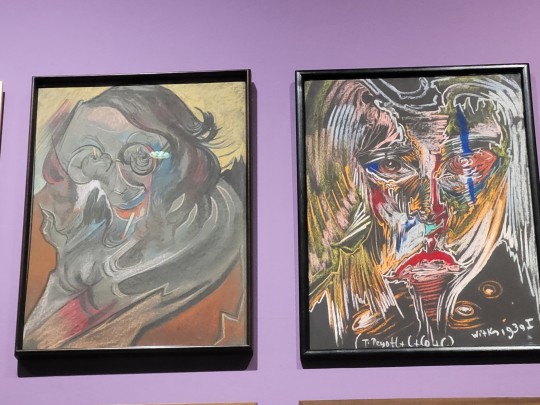

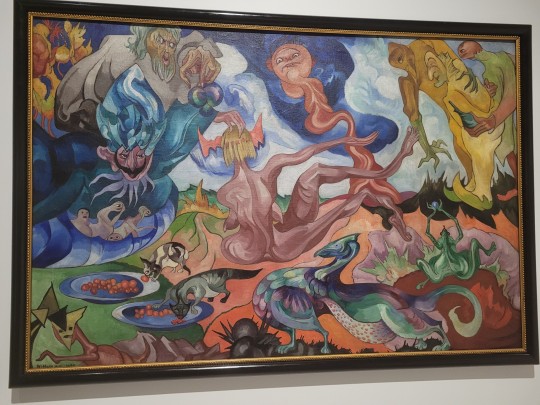

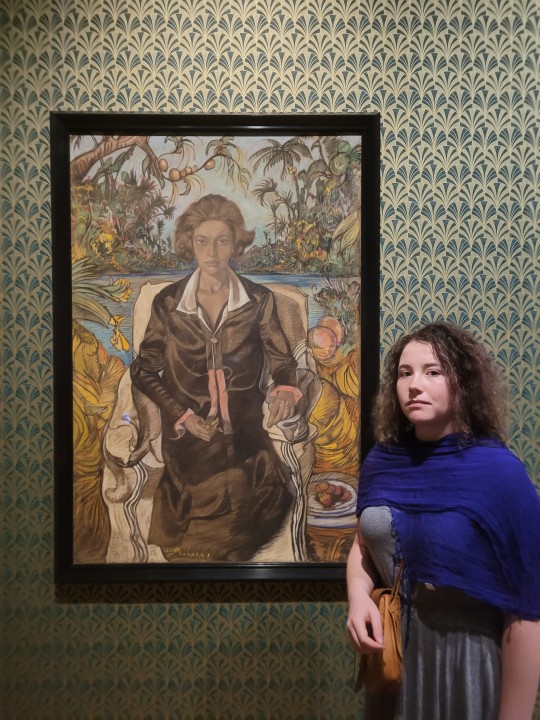

Wystawa dzieł Witkacego na terenie Muzeum Narodowego w Warszawie
Exhibition of Witkacy's art in National Museum in Warsaw
#witkacy#stanisław ignacy witkiewicz#muzeum narodowe#muzeum narodowe w warszawie#national museum in warsaw#art#beautiful#sztuka#to się nazywa sztuka#formizm#formism#obrazy#paintings
6 notes
·
View notes
Text

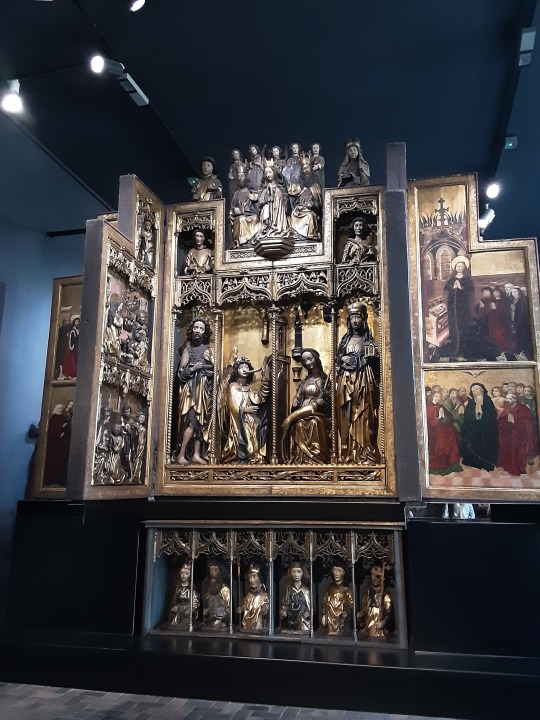

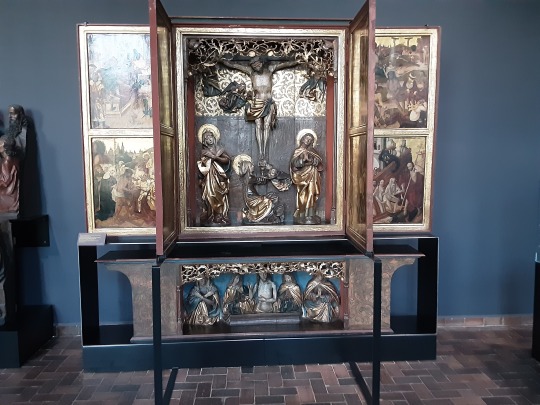

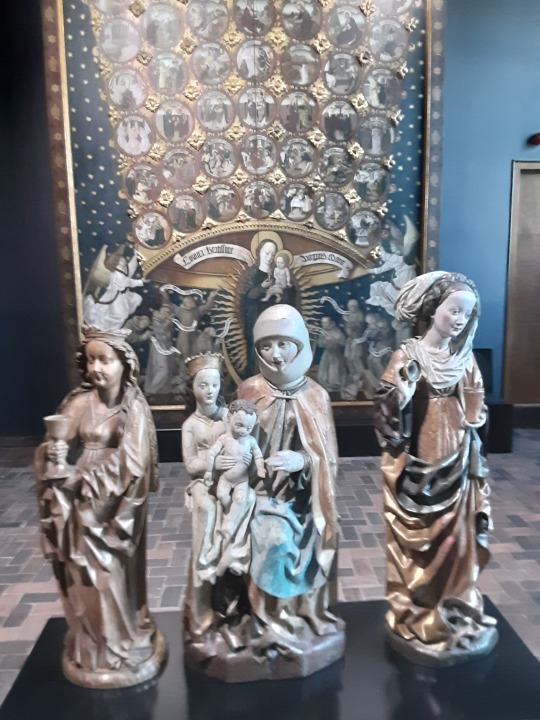
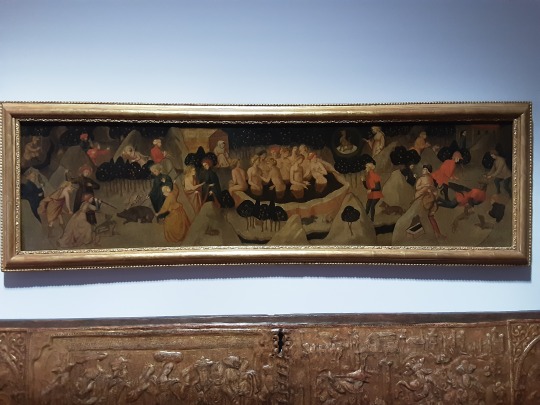
The spirit is willing but the flesh is weak.
Tuesday 12 September 2023
I walked to the National Museum in Warsaw today to view its large and labyrinthine collections. Since I could find no map in English I viewed the collection outside chronological order, starting with medieval art, then the 19th century, then old masters and early modern, finishing with ancient art. I have previously mentioned my interest in medieval art, so I was pleased to see the relatively large collection of late medieval altarpieces, though there was very little high medieval art and no Romanesque at all.
At my age, this one museum left me quite exhausted. It was a large museum, but still... I went back to my hotel and took a nap, waking up in the evening with just enough time to use the pool again before they closed at 10:00 pm. When I was younger, I could walk around all day and visit multiple museums. Today I was done in by one. I will note that I have not yet adapted to the time change, so that was part of my fatigue today.
The spirit is willing but the flesh was weak, as I experienced, and in thinking about this, while looking at the museum's museum collection while experiencing fatigue, I realized that the medieval world was acutely aware of the division between the flesh and the spirit. The horrific tortures and execution depicted in medieval art seem foreign to us, while the people of medieval times would have been intimately familiar to such things—you have a society dominated by a spiritual ideal represented in this world by the institution of the church, but side-by-side with this you have the pervasive embodied suffering not only represented in the lives of individuals, but used by the institutional church to represent the life of Christ.
Another reflection that occurred to me in the museum was regarding institutions like the predominance of the church in medieval life: I have often written about the belief that individuals within a society have (or fail to have) in the institutions of their society. In my own modern and naturalistic way, I have viewed institutions as only being viable when it is possible to believe in them authentically, but this view has been bound up with the idea that the institutions themselves must be worthy of belief and respect. But what about those who believe in an institution even when it is corrupt and when the believer knows it is corrupt? This is a degree of belief that I personally have never experienced, but I think it is not that unusual. Arthur Koestler's Darkness at Noon was about belief in the communist party even with the protagonist knowing that he is being unjustly persecuted and prosecuted.
1 note
·
View note
Text

A black figure kalpis depicting the poet Sappho (ΦΣΑΦΟ) holding a barbiton, an ancient stringed instrument similar to a lyre. Attributed to the eponymous Sappho Painter, active in Attica c. 510 to 490 BC.
🏛️: National Museum, Warsaw
#classics#classical antiquity#ancient greece#ancient greek#greece#greek#classical archaeology#greek archaeology#sappho#tenth muse#the poetess#national museum warsaw#sapphoposting
685 notes
·
View notes
Photo
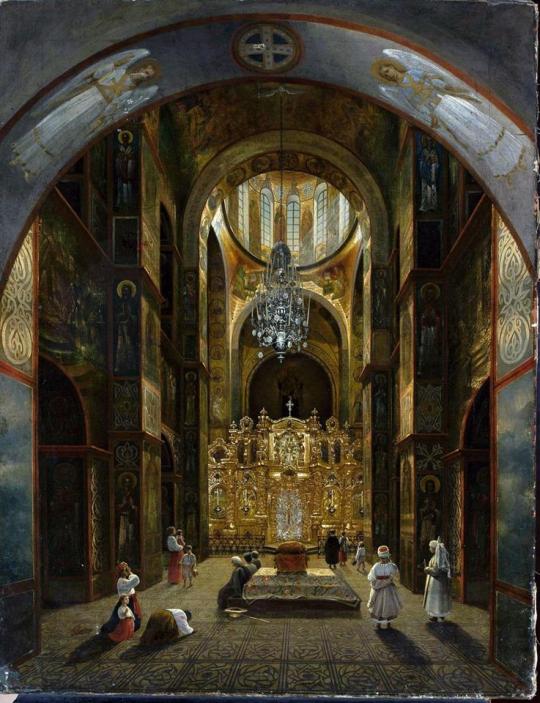
Interior of The St.Sophia`s Cathedral in Kyiv by Mykhailo Sazhyn, 1854
#The National Museum in Warsaw#Saint Sophia`s Cathedral#interior#Kyiv#ukrainian art#Ukraine#1850s#St.Sophia`s Cathedral#Ukrainian Architecture
265 notes
·
View notes
Text

Water Nymphs, Witold Pruszkowski, 1877-78
Oil on canvas
150 x 100 cm (59.06 x 39.37 in.)
National Museum, Warsaw, Poland
36 notes
·
View notes
Text

Henryk Hektor Siemiradzki - Dirce chrześcijańska (Christianskaja Dirceja v cirke Nerona; Christian dirce in the Circus of Nero), 1897, Warsaw National Museum
Signature, date and location:
H.SIEMIRADZKI PINX. A.D.MDCCCXCVII / .ROMA.
The painting was most probably inspired with the work of Histoire des origines du christianisme, Volume IV Antichrist by French historian and philosopher Ernest Renan.
#art#arte#classical art#classical paintings#painting#henryk siemiradzki#henryk hektor siemiradzki#christian dirce#christian dirce in the circus of nero#dirce chrzescijanska#wnm#warsaw national museum#1890s#1897#artist#polish art#polish painting#polish painter
16 notes
·
View notes
Text

Bonne Nouvelle Boulevard in Paris, Amédée-Julien Marcel-Clément, 1910
#art#art history#Amédée-Julien Marcel-Clément#genre painting#genre art#cityscape#street scene#Paris#France#Belle Epoque#rain#rain scene#rainy day#pluviophile#French art#20th century art#oil on canvas#National Museum in Warsaw
151 notes
·
View notes
Text
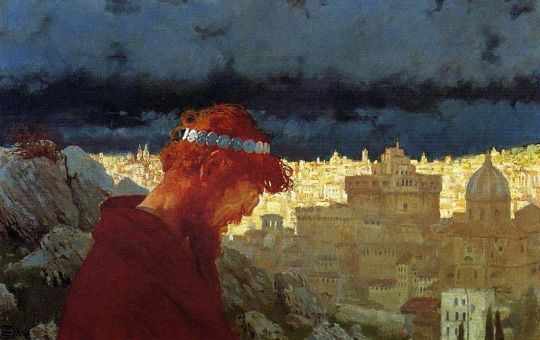
Edward Okuń (Polish, 1872-1945)
Judas, 1901. National Museum in Warsaw
oil on cardboard
13 notes
·
View notes
Text
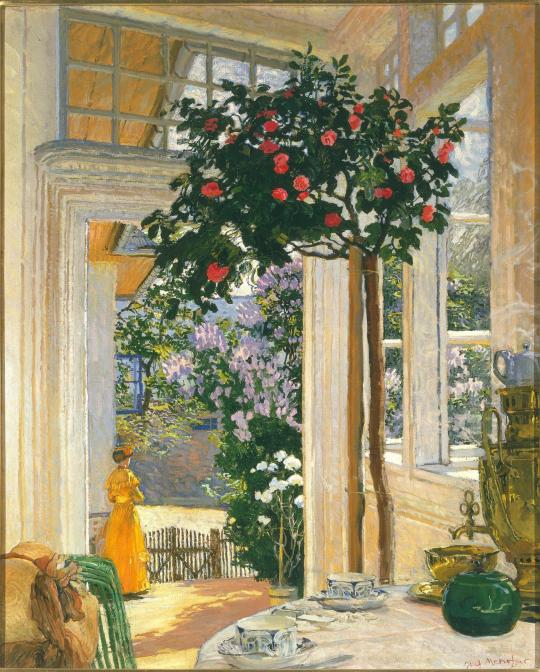
#art#paintings#museum#art pieces#tumblr art#Józef Mehoffer#Sun in May#1911#National Museum in Warsaw. [1956x2433]
45 notes
·
View notes
Text

Demons in the Book of the Dead of Bakay.
When: New Kingdom, 18th Dynasty
Where: National Museum, Warsaw
#Ancient Egypt#papyrus#Book of the Dead#demons#National Museum Warsaw#New Kingdom#18th Dynasty#Bakay
32 notes
·
View notes
Text
anyway i got to see Him in person today...

#terrible photo i am aware.#anyway i sometimes forget that like. i Live in warsaw. i can just go to the national museum
5 notes
·
View notes
Text

Stanczyk (1862) by artist Jan Matejko , The National Museum in Warsaw
#jan matejko#stanczyk#year: 1862#national museum warsaw#art#kunst#arte#fool#narr#1862#19th century art#figurative painting#figurative art
14 notes
·
View notes